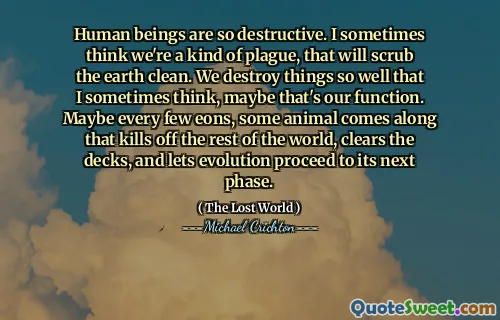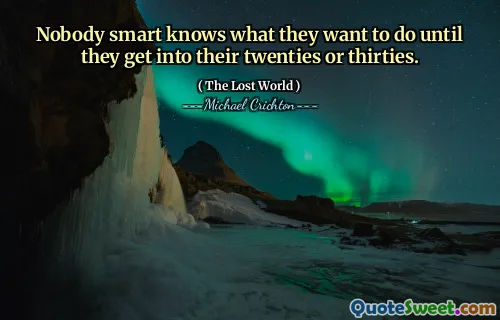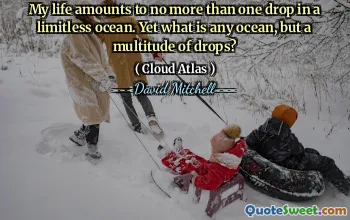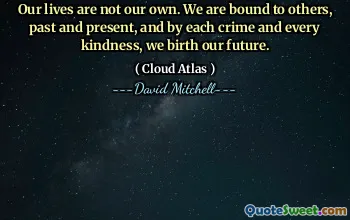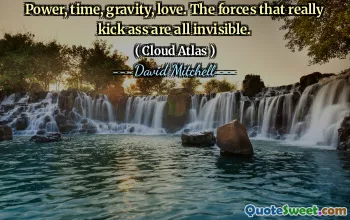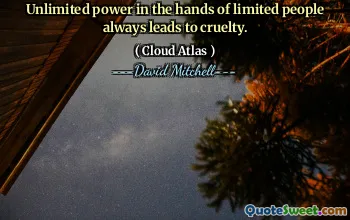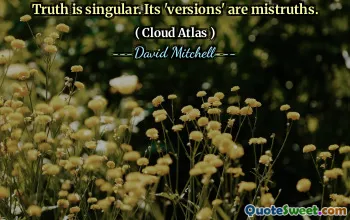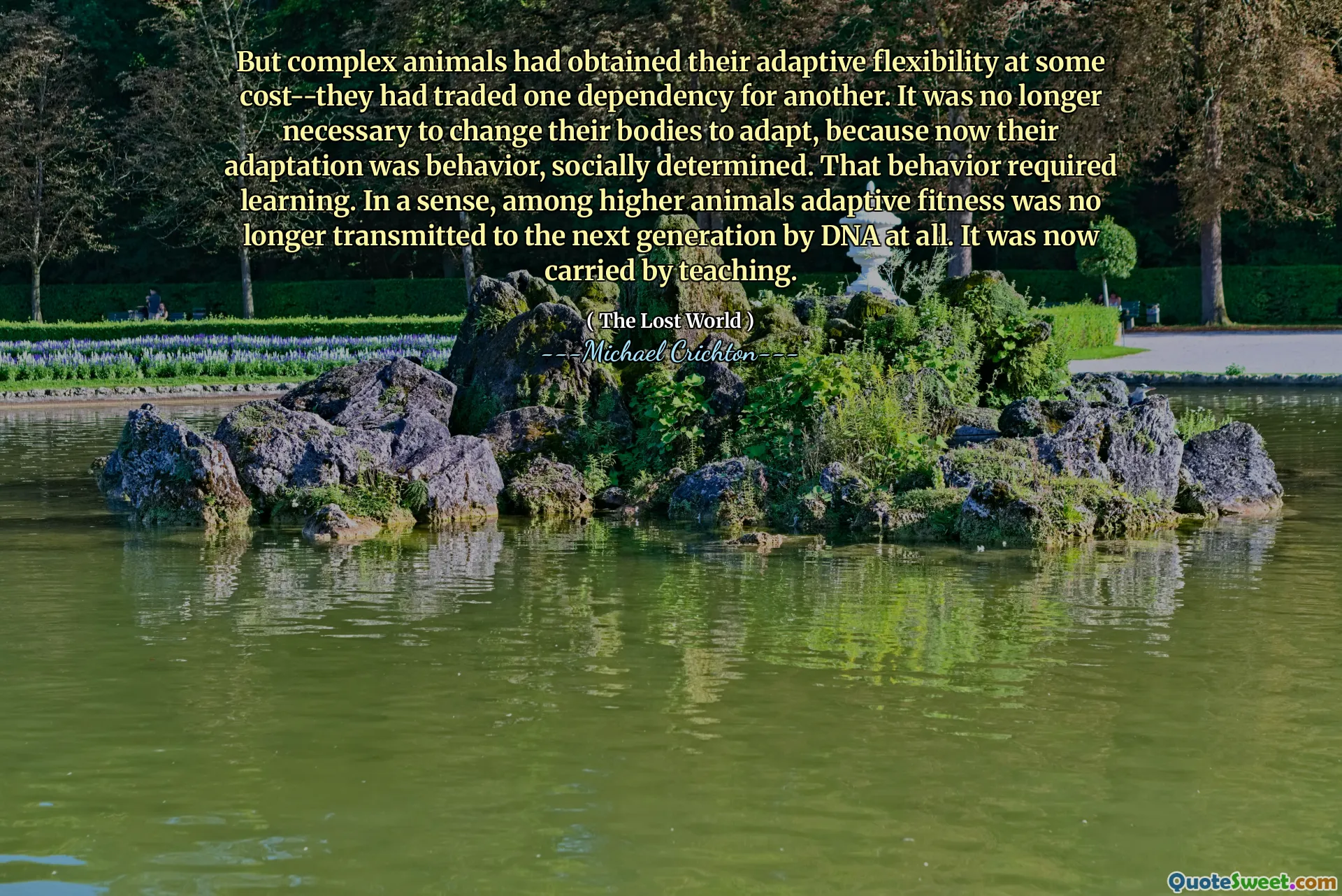
But complex animals had obtained their adaptive flexibility at some cost--they had traded one dependency for another. It was no longer necessary to change their bodies to adapt, because now their adaptation was behavior, socially determined. That behavior required learning. In a sense, among higher animals adaptive fitness was no longer transmitted to the next generation by DNA at all. It was now carried by teaching.
This quote highlights a fundamental shift in evolutionary adaptation, emphasizing the importance of learned behavior over genetic transmission in complex animals. It suggests that advanced creatures, like humans and other higher animals, have evolved to depend heavily on social learning and teaching as mechanisms for adaptation rather than solely relying on genetic changes. This transition signifies that, unlike simple organisms which adapt primarily through biological evolution over generations, complex animals can rapidly adjust to changing environments through behavioral flexibility. This ability to learn from others confers a significant advantage, enabling survival in dynamic circumstances that would otherwise require slow genetic evolution. The concept also underscores the inherent social nature of higher animals, emphasizing how culture and learned behaviors become essential components of evolutionary success. It raises intriguing questions about the role of culture, knowledge transmission, and societal structures in shaping the survival and development of intelligent species. Moreover, this perspective invites reflection on human progress—how our capacity for teaching and learning accelerates evolution and development far beyond purely biological means. Understanding this dynamic enriches our appreciation of the interplay between biology and environment, and how social mechanisms have become central to adaptation in the animal kingdom, especially in humans. As we navigate complex social systems and continue to innovate, this recognition underscores the importance of education, collaboration, and shared knowledge for future evolutionary trajectories.

